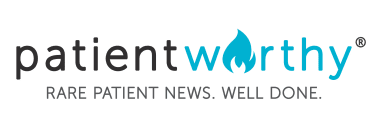A Rare Intervention For His Children’s Rare Disease
An inspiring article has recently been published in the journal Nature that credits Nick Sireau, a resident of the UK, with the determination to “fight the system” and find treatment for his children’s alkaptonuria.
The First Symptoms
Nineteen years ago, Nick and his wife Sonya, found that their baby’s urine had turned almost black. After what Nick deemed to be a misdiagnosis by a local doctor, they took their baby to a hospital in London.
After several tests, the doctors explained to Nick and Sonya that the discoloration was caused by a substance formed by the metabolism of tyrosine. The substance was building up in various parts of their baby’s body, including his eyes and heart.
The diagnosis was alkaptonuria (AKU), a rare inherited disease.
The devastated parents were told that their child would eventually need replacement of the major joints in his body by the time he was forty years old. The doctors told them that there was nothing the medical profession could do for them.
Nick’s Journey
Nick started on a course to find a solution for his son’s disease and it began in Liverpool. He had heard of a possible treatment but that it was not approved for AKU. The disease was so rare that pharmaceutical companies did not view it as a lucrative investment. Approval of the drug required costly clinical trials. Even if money was available the disease is so rare that it would be difficult to find participants.
Nick searched the internet for information on the disease and found a post by an AKU patient named Bob Gregory of Liverpool. Nick set out immediately for Liverpool.
Bob Gregory told Nick that he met with a doctor nicknamed Ranga at the university hospital in Liverpool who said that he would help him. Bob set up a charity for research and named Ranga as the medical director. Nick pledged his support.
A Clinical Trial for Nitisinone
A few patients were able to purchase nitisinone but most insurers refused to cover the drug due to its high cost. The price tag was $5000 US in the UK and about $30,000 in the United States. The only answer was a clinical trial.
Ranga found out that some physicians in the United States were planning a trial for nitisinone. The drug is actually a weed killer, but researchers found that it could break down the HPPD enzyme.
Disabling the HPPD enzyme would save the lives of children with type-1 hereditary tyrosinemia (HT1). It might also be effective in AKU by breaking down tyrosine and thus slowing the production of HGA.
Although the weedkiller is toxic, the disease is so deadly that the physicians felt they had to go forward with a trial.
Researchers at the National Institute of Health tested nitisinone from 2005 to 2008 on 20 AKU patients out of a total of 40 patients in the trial. The endpoint of the trial was to find an improvement in hip flexibility.
Unfortunately, this goal was not met because the investigators later realized that the control group, 20 patients not taking the drug, were receiving physical therapy during the trial period. The trial failed.
The Long Journey to a Second Trial
Nick quit his job to work full time as a fundraiser for the AKU fund. He managed to raise $$633,000 US which supported research to track the progress of the disease. The EU Commission granted approximately five million for a major trial.
At this point, Nick’s younger son was also affected with AKU, so a trial would mean that both sons would have access to the drug. The researchers were able to identify 400 patients worldwide.
The initial group of patients at the onset of the trial was 138. This time the regulators decided to change the endpoint from improvement in hip rotation to judging its success on the basis of reduced HGA and a reduction of symptoms. The 2015 nitisinone trial is ongoing.
Conversely, Nick and the AKU group are lobbying for smaller trials whereby patients will receive treatment individually instead of as a group. They believe that this mode of research will evolve into a trend.
So far the European study looks promising. However, the FDA officials in the United States have not yet approved the same endpoint that has been accepted for European trials.
For the time being this leaves many parents without a means to help their babies.

.jpg)





